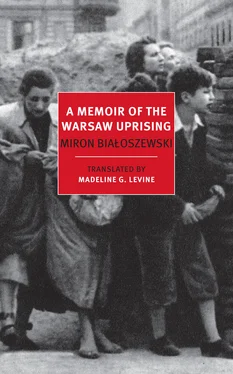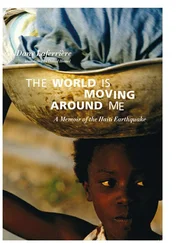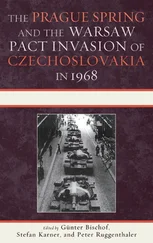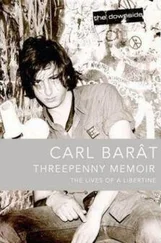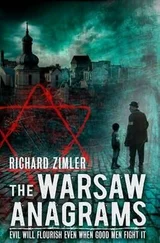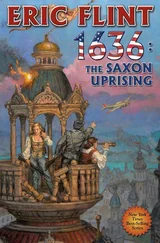Miron Bialoszewski - A Memoir of the Warsaw Uprising
Здесь есть возможность читать онлайн «Miron Bialoszewski - A Memoir of the Warsaw Uprising» весь текст электронной книги совершенно бесплатно (целиком полную версию без сокращений). В некоторых случаях можно слушать аудио, скачать через торрент в формате fb2 и присутствует краткое содержание. Год выпуска: 2015, Издательство: NYRB Classics, Жанр: Биографии и Мемуары, на английском языке. Описание произведения, (предисловие) а так же отзывы посетителей доступны на портале библиотеки ЛибКат.
- Название:A Memoir of the Warsaw Uprising
- Автор:
- Издательство:NYRB Classics
- Жанр:
- Год:2015
- ISBN:нет данных
- Рейтинг книги:4 / 5. Голосов: 1
-
Избранное:Добавить в избранное
- Отзывы:
-
Ваша оценка:
- 80
- 1
- 2
- 3
- 4
- 5
A Memoir of the Warsaw Uprising: краткое содержание, описание и аннотация
Предлагаем к чтению аннотацию, описание, краткое содержание или предисловие (зависит от того, что написал сам автор книги «A Memoir of the Warsaw Uprising»). Если вы не нашли необходимую информацию о книге — напишите в комментариях, мы постараемся отыскать её.
A Memoir of the Warsaw Uprising — читать онлайн бесплатно полную книгу (весь текст) целиком
Ниже представлен текст книги, разбитый по страницам. Система сохранения места последней прочитанной страницы, позволяет с удобством читать онлайн бесплатно книгу «A Memoir of the Warsaw Uprising», без необходимости каждый раз заново искать на чём Вы остановились. Поставьте закладку, и сможете в любой момент перейти на страницу, на которой закончили чтение.
Интервал:
Закладка:
All of this is like one prolonged illusion. An awfully trite tale. But only this suits me. For what was felt then. Because you didn’t have to be a poet to have things multiplying in your head. If I write very little about my impressions. And everything in ordinary language. As if nothing happened. Or if I hardly ever look inside myself, or seemingly from the outside. It is only because it can’t be done any other way. After all, that is how we experienced things. And, generally speaking, that is the only device, not an artificially constructed one but the only completely natural device. To convey all of this. For twenty years I could not write about this. Although I wanted to very much. I talked. About the uprising. To so many people. All sorts of people. So many times. And all along I was thinking that I must describe the uprising, somehow or other describe it. And I didn’t even know that those twenty years of talking — I have been talking about it for twenty years — because it is the greatest experience of my life, a closed experience — precisely this talking is the only device suited to describing the uprising.
Let us return to the action. Around August 13. Bombs had fallen. On Stare Miasto. Obviously, on Miodowa Street even earlier. But in those days Miodowa wasn’t as clearly included within Stare Miasto as it was later when it was completely cut off from the rest of Warsaw along with Stare Miasto, just like all of Długa Street and even Bielańska and Przejazd — they were all Stare Miasto. We didn’t speak of them as belonging anywhere else. And perhaps that whole business is reflected to this day. That it is Stare Miasto. Later on, I shall give other examples of such topographic redefinitions. All the same, the bombs fell on Muranów, too. The street leading from Bonifraterska to the Vistula. That is, the one from Stare Miasto — or, more precisely, from Nowe Miasto. And people began to call it, too, Stare Miasto. And it has remained Stare Miasto to this day. Or Nowe Miasto. And I am not confusing these two entities here because Nowe Miasto is a part of Stare Miasto. Well, the bombs were falling on Muranów, on Zakroczymska Street, and they struck a huge fuel tank. There was a monstrous explosion. A number of people died. So that it became known as the Muranów incident. Among us. I remember that the first bombs dropped on Stare Miasto landed on the corner of Mostowa and Nowomiejska Streets. Where today — if I’m not mistaken — the Nowomiejski cafeteria is located. Between the walls and Mostowa Street. The present walls. Because at that time there were no walls on that side of Mostowa and Nowomiejska as you face the Vistula. They just ended on Nowomiejska Street. There wasn’t a barbican either. Because it was immured in the Gdańsk Cellar. In a stone building by that name. Well, the bombs landed somewhere — on the house in which the shop was situated (the shop where we had bought something that first day), or on the building across the street from it. And it was then I understood that it had finally begun. That there was nothing we could count on anymore. Not even half a day of peace. That my Stare Miasto vacation was over. Which could have been foreseen from the beginning. From my arrival there. But actually the difference was that it had finally begun. It was no longer just a premonition. It was . When we reached Stara Street all of a sudden it was nothing but a pile of red bricks, dust, and the steps. Perhaps the first bombs were already falling then on the Sisters of the Holy Sacrament. Perhaps they’d already begun to burn. Because they did burn down to the ground. By stages. Whatever they had there. Something also happened to the Dominicans, I think.
A gunboat was patrolling the Vistula and shelling us. And on the far shore the Germans seemed to be sitting in those tall trees watching us through binoculars. It was said that they saw and heard everything.
Tanks thundered along Wybrzeże and occasionally strayed into Kościelna Street, up to the first barricade. I don’t know exactly what happened to those tanks. Because by then a saying with which people frightened themselves had already become popular: “Quiet! There’s a tank on the other side of the wall.”
And the entire shelter would repeat “Quiet! There’s a tank outside the wall…”
Even the gentlemen with the red armbands liked to say that out loud.
Swen would laugh uproariously at that. But the tank outside the wall was really there a few times, it seems. Because once — I’m watching — high up in a little red window in a small cellar a partisan was waiting, squatting, bent over, with a bottle of kerosene in his hand. But that was probably later on.
What else happened in those first four or five days on Rybaki?
A pumpkin expedition. I think it was around that time. In that courtyard. Which means that in the course of two or three days things had changed so drastically that dashing at full speed into the yard to pick two pumpkins and rushing back with them into the stairwell entrance had become terribly risky. We cut up the pumpkins (or gourds) into slices and ate them immediately with our so-called family. The food situation was becoming difficult. Now, with the entrapment of districts in the fortress, how long could it last? And also, how could we dig when shells and bombs were falling here? For the time being, Stare Miasto and a part of Muranów and Stawki, which is to say, the warehouses on Stawki, were living off those warehouses. There were continuous battles to keep them in our hands. Just as there were battles for the power plant on Powiśle. We lost the waterworks more quickly. That was the first catastrophe: no water. The second, a little later: We lost the power plant — no light. The third, a local catastrophe for Stare Miasto: the loss of Stawki — and hunger. The Sisters of the Holy Sacrament were still saving people then as best they could. But more about that later.
But what was it really like? As we already know, Wola had fallen. Mokotów was holding out. Żoliborz, too. Czerniaków. Powiśle. Most of Śródmieście. They were all ours. Of course, not literally all of Mokotów or all of Żoliborz or Czerniaków. That’s an important point — that they weren’t entirely ours. Surface communication was becoming more difficult all the time. Soon the news reached us that communication had been established with Czerniaków, Żoliborz, Mokotów, but only via the sewers. Plus the fact that — as people said — you would have to walk part of the way to Czerniaków on your knees. A storm sewer (on Krasiński Street, I think) made communication with Żoliborz even more complicated: The Hitlerites would open the manholes there from time to time and toss grenades into the sewer or (this I now know from films) would bar the exits with barbed wire and hang grenades on it.[10]
Despite this, communication was uninterrupted. (People were dying above ground, too. What difference did it make!) The couriers were mainly girls or young boys. Surface communication was maintained with Powiśle for a longer time. That is, between Śródmieście and Powiśle. And for the time being we had surface communication with Śródmieście, too. True, it was terribly problematic. And probably very costly.
What did people do in the shelter?
They talked. Sometimes I would walk through the corridor to the central cellar, the one with the wing where sunlight entered from above, and I would sit there and write. There were many prayer sessions in which people participated. At that time I was still something of a believer. (No doubt, some people will look upon this skeptically or ironically. Or they will refer to it mockingly, which infuriates me, although I won’t say anything because I simply have an emotional tie with it.) People waited for the newssheets. Which arrived several times a day. Because there were many presses. The AK’s. The AL’s. The PL’s. I don’t know if Civil Defense had its own. Right-wing sheets also appeared (the Warszawianka , for example). We didn’t discriminate among them then as we should have. We thought, if they were Polish, they were Polish. Anyway, the fascistic ones didn’t appear in Stare Miasto. The Home Army and the People’s Army were there. They accepted each other. And the people accepted both of them. After some initial sparring, as I recall, they simply grew accustomed to each other. And there was harmony.
Читать дальшеИнтервал:
Закладка:
Похожие книги на «A Memoir of the Warsaw Uprising»
Представляем Вашему вниманию похожие книги на «A Memoir of the Warsaw Uprising» списком для выбора. Мы отобрали схожую по названию и смыслу литературу в надежде предоставить читателям больше вариантов отыскать новые, интересные, ещё непрочитанные произведения.
Обсуждение, отзывы о книге «A Memoir of the Warsaw Uprising» и просто собственные мнения читателей. Оставьте ваши комментарии, напишите, что Вы думаете о произведении, его смысле или главных героях. Укажите что конкретно понравилось, а что нет, и почему Вы так считаете.
